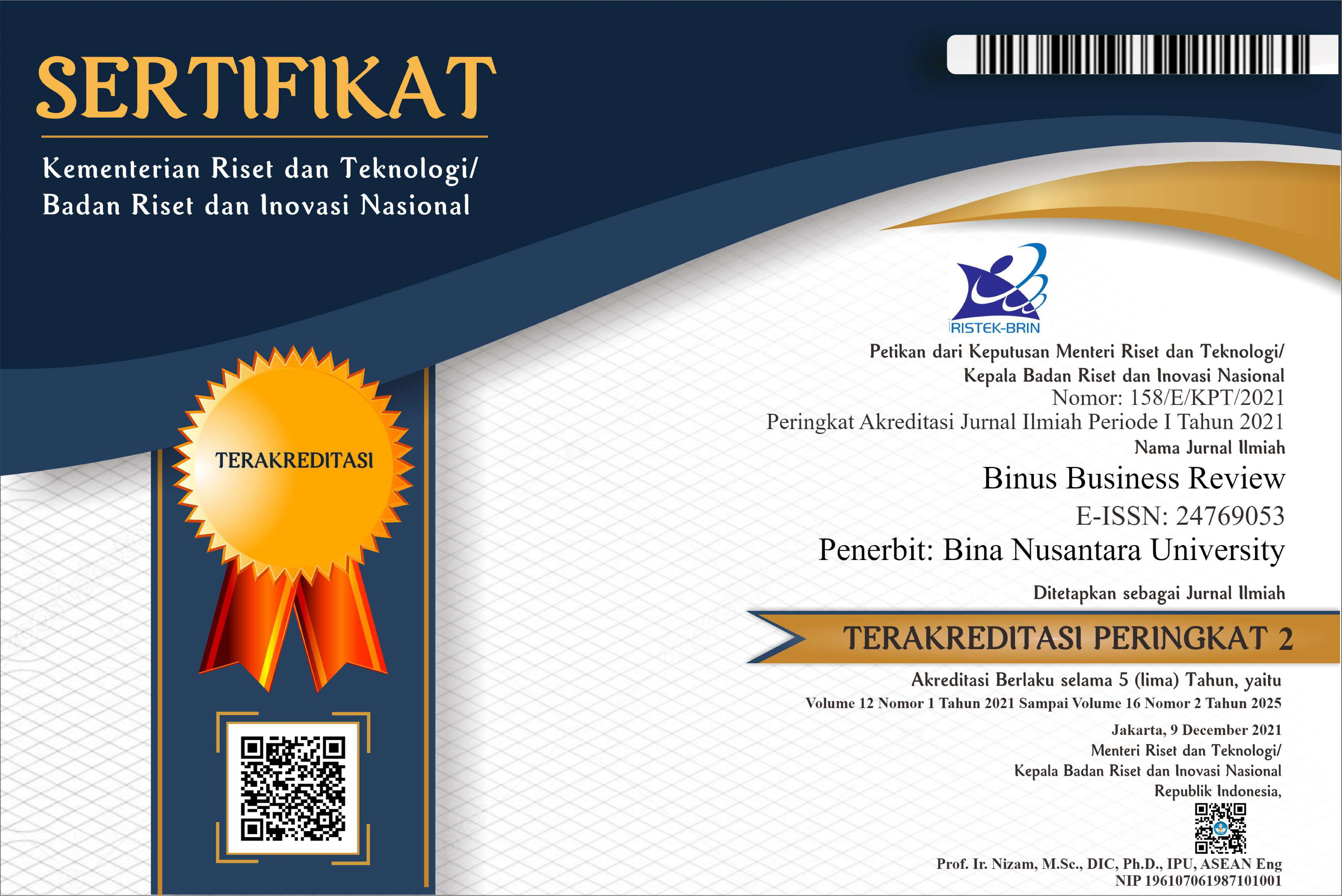Accuracy Combination Test of Classical and Modern Technical Analysis: A Case Study in Stock of PT Wijaya Karya Tbk
DOI:
https://doi.org/10.21512/bbr.v7i1.1465Keywords:
test accuracy, classical technical analysis, modern technical analysisAbstract
The research aimed to measure the accuracy and combination of Classic and Modern Technical Analysis. PT Wijaya Karya Tbk (WIKA)’s stock in two periods is the sample of research. Technical analysis was used to predict stock prices by observing changes in historical share price. Practically, technical analysis is divided into Classic Technical and Modern. Research was conducted by library study and using a computer software. Microsft Excel was used for the simulation and Chart Nexus for analyzing Modern Technical Analysis. The research period started in January 1, 2013 until December 31, 2013 and January 1, 2014 until December 31, 2014. The Classic Technical Analysis used Support, Resistance, Trendline, and Flag Patern. Meanwhile for Modern Technical Analysis used Moving Average, Stochastic, Moving Average Convergence Divergence (MACD) indicator. The Classical Technical Analysis gave less result than Modern Technical Analysis. The classical give 14 investment decisions in two periods. The average return of Classical Technical is 15,50%. Meanwhile the Modern Technical Analysis gave 18 investment decisions in two periods. The average return of Modern Technical is 18,14%. Combining Classic Technical Analysis and Modern Technical Analysis gave 20 investment decisions with the average rate of return 20,41%.Plum Analytics
References
Bulkowski, T. (2005). Trading Classic Chart Patterns (1st ed.). Canada: Wiley Trading.
Chart Nexus (2012). Software Historical Analisis. Retrieved Desember 26, 2012 from www.chartnexus.com/historical-Price.
Darmadji, T. & Fakhrudin H. (2011). Pasar Modal di Indonesia (3rd ed.). Jakarta: Salemba Empat.
Elder, A. (2002). Come into My Trading Room. New York: John Wiley & Sons.
Fischer, R. & Fischer, J. (2003). Candlesticks, Fibonacci and Chart Pattern Trading Tools. Switzerland: Wiley Trading.
Mochsen, G., & Abdolmajid A. (2014). Profitability of technical analysis indicators to earn abnormal returns in international exchange markets. International Scientific Journal, 19(11), 20–26.
Ong, E. (2008). Technical Analysis for Mega Profit. Jakarta: Mega Options.
Purnomo, B. (2010). Fungsi Indikator MACD (Moving Average Convergence Divergence), Parabolic SAR (Stop and Reserve), dan Stochastic Oscilator untuk menentukan keputusan Jual dan Beli Saham Telekomunikasi di Bursa Efek Indonesia, Jakarta,
(Thesis). Universitas Trisakti Jakarta.
Syamsir, H. (2004). Solusi Investasi di Bursa Saham Indonesia (1st ed.). Jakarta: Elex Media Komputindo.
Downloads
Published
Issue
Section
License
Authors who publish with this journal agree to the following terms:
a. Authors retain copyright and grant the journal right of first publication with the work simultaneously licensed under a Creative Commons Attribution License - Share Alike that allows others to share the work with an acknowledgment of the work's authorship and initial publication in this journal.
b. Authors are able to enter into separate, additional contractual arrangements for the non-exclusive distribution of the journal's published version of the work (e.g., post it to an institutional repository or publish it in a book), with an acknowledgment of its initial publication in this journal.
c. Authors are permitted and encouraged to post their work online (e.g., in institutional repositories or on their website) prior to and during the submission process, as it can lead to productive exchanges, as well as earlier and greater citation of published work.
USER RIGHTS
All articles published Open Access will be immediately and permanently free for everyone to read and download. We are continuously working with our author communities to select the best choice of license options, currently being defined for this journal as follows: Creative Commons Attribution-Share Alike (CC BY-SA)




















